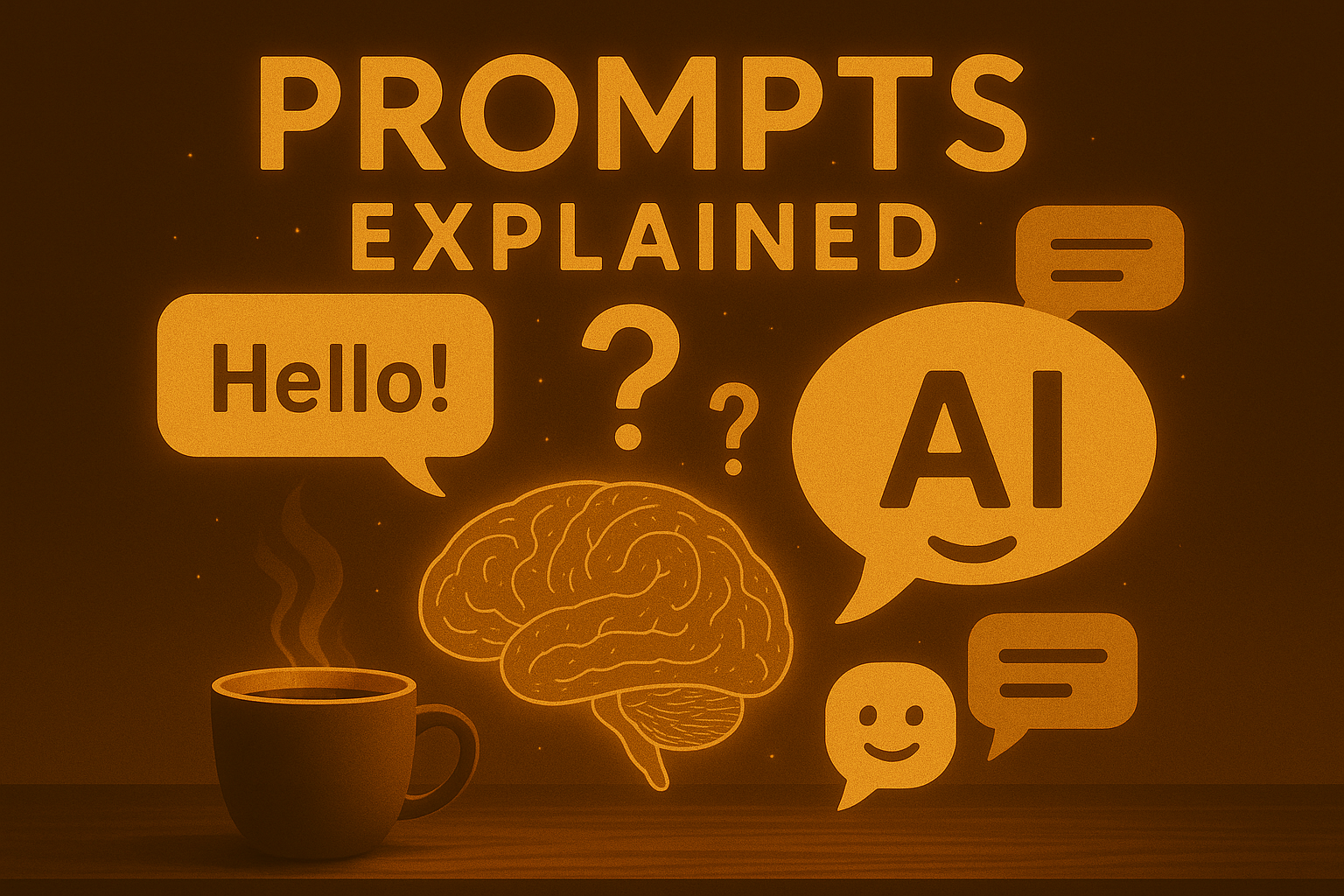
Prompts Explained: How to Talk to AI (Without Feeling Awkward)
I watched my colleague stare at ChatGPT's blank text box for three full minutes last week. She typed something, deleted it, typed again, then looked at me and asked, "Am I doing this wrong?"
Here's the truth: most people feel awkward talking to AI. We're not sure if we should be formal or casual, detailed or brief, polite or direct. And that uncertainty keeps us from actually using these tools that everyone keeps saying will change our work lives.
Let me show you what prompts actually are and why they're way simpler than you think.
What Is a Prompt, Really?
A prompt is just instructions you give to an AI. That's it. Nothing fancy.
Think of it like ordering coffee. When you walk up to the counter and say "large cappuccino with oat milk," that's a prompt. You're telling the barista what you want, and they use their training and experience to make it happen.
AI prompts work the same way. You tell the AI what you need, and it uses its training to generate a response. The better your instructions, the closer you get to what you actually wanted.
The Coffee Shop Analogy
Imagine you walk into a coffee shop and just say "coffee." The barista will give you something, but it might be black coffee when you wanted a latte, or medium when you wanted large.
Now imagine you say: "I'd like a large iced vanilla latte with oat milk and light ice." You're getting exactly what you want because you were specific.
AI works the same way. "Write something about marketing" will get you generic content. But "Write three social media post ideas for a small bakery launching a new sourdough line" gets you something actually useful.
The more context you provide, the better your results. Not complicated, just specific.
Why Prompts Feel So Weird at First
We're used to talking to humans who understand context automatically. If you tell your coworker "I need help with that thing," they probably know what "that thing" is because they've been working with you all week.
AI doesn't have that context. It only knows what you tell it in that moment.
This isn't a limitation, it's actually an opportunity. Once you realize the AI has no assumptions about what you want, you can be crystal clear. No politeness required. No small talk needed. Just clear instructions.
The Three Parts of a Good Prompt
Every effective prompt has three simple ingredients:
Role or Context: Tell the AI what perspective to take. "You're a career coach" or "You're explaining this to someone with no technical background."
Task: What do you actually want? "Write," "summarize," "brainstorm," "explain" - be direct about the action.
Specifics: Add details that matter. Format, length, tone, audience, constraints. "Keep it under 200 words" or "Make it friendly and casual."
You don't need all three every time, but they're your basic building blocks. The more you include, the better your results.
What Good Prompts Actually Look Like
Let's compare two real examples.
Weak prompt: "Tell me about email marketing."
Stronger prompt: "I'm a small business owner with zero marketing experience. Explain the three most important things I need to know about email marketing. Keep it simple and under 300 words."
See the difference? The second one tells the AI who you are, what you need, and how you need it delivered.
Here's another pair.
Weak prompt: "Write a social media post."
Stronger prompt: "Write an engaging LinkedIn post about the importance of taking breaks during the workday. Target it at busy professionals. Keep it under 150 words and end with a question to encourage comments."
You're not being demanding - you're being clear. And clarity gets results.
Common Prompt Mistakes (And How to Fix Them)
Being too vague is the biggest issue. "Help me with my resume" doesn't give the AI enough to work with. Instead: "Review my resume summary and suggest three ways to make it more compelling for project manager roles in tech companies."
Another mistake? Asking multiple unrelated questions at once. Break complex requests into separate prompts. Think of it like ordering at a coffee shop - you don't order your morning coffee and your afternoon snack in the same breath.
And here's one that surprises people: you can have a conversation. If the first response isn't quite right, say so. "That's good, but can you make it more casual?" or "Can you give me three alternatives?" The AI remembers the conversation context.
The Bottom Line
Prompts aren't a mysterious technical skill. They're just clear instructions. The same communication skills you use to order coffee or brief a colleague work here too.
Be specific about what you want. Give context about who you are and what you need. And don't be afraid to refine your request if the first attempt isn't quite right.
Next week, we'll talk about how to improve AI responses when they miss the mark - because even great prompts sometimes need tweaking.
For now, pour yourself a coffee and try writing one prompt today. Start simple. Get specific. See what happens.
You've got this.